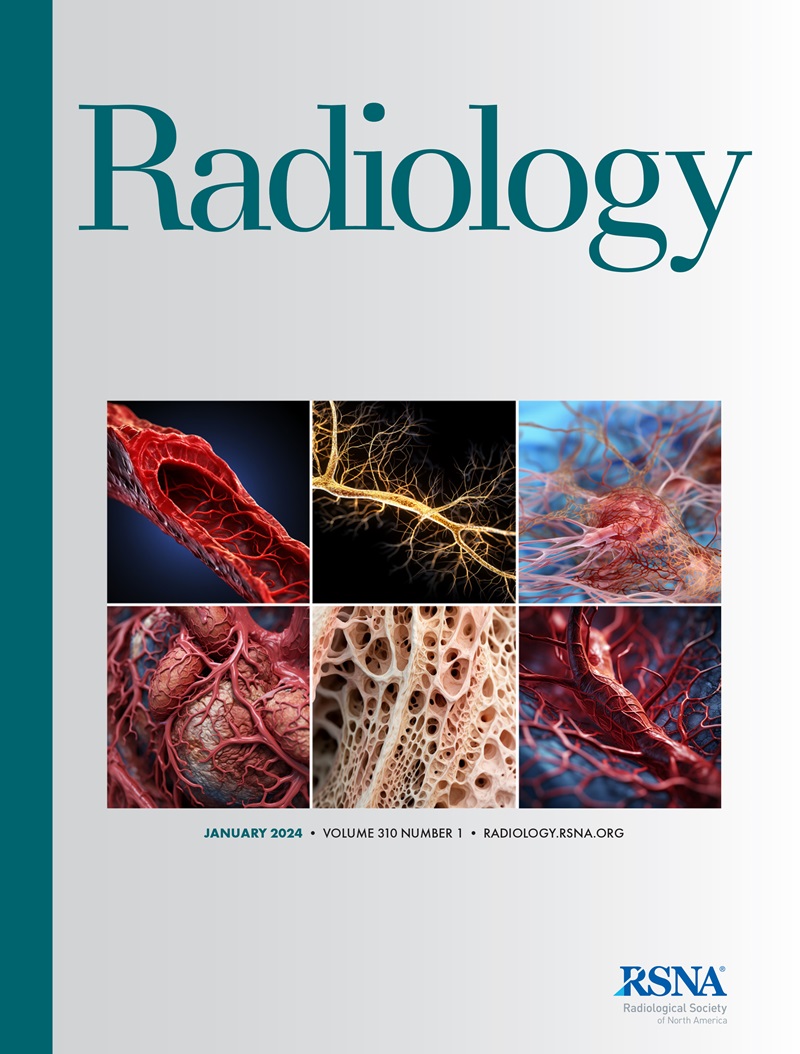求助PDF
{"title":"CT 对肝脏脂肪变性的诊断准确性:系统综述与元分析》。","authors":"Maryam Haghshomar, Dominic Antonacci, Andrew D Smith, Sarang Thaker, Frank H Miller, Amir A Borhani","doi":"10.1148/radiol.241171","DOIUrl":null,"url":null,"abstract":"<p><p>Background CT plays an important role in the opportunistic identification of hepatic steatosis. CT performance for steatosis detection has been inconsistent across various studies, and no clear guidelines on optimum thresholds have been established. Purpose To conduct a systematic review and meta-analysis to assess CT diagnostic accuracy in hepatic steatosis detection and to determine reliable cutoffs for the commonly mentioned measures in the literature. Materials and Methods A systematic search of the PubMed, Embase, and Scopus databases (English-language studies published from September 1977 to January 2024) was performed. Studies evaluating the diagnostic accuracy of noncontrast CT (NCCT), contrast-enhanced (CECT), and dual-energy CT (DECT) for hepatic steatosis detection were included. Reference standards included biopsy, MRI proton density fat fraction (PDFF), or NCCT. In several CECT and DECT studies, NCCT was used as the reference standard, necessitating subgroup analysis. Statistical analysis included a random-effects meta-analysis, assessment of heterogeneity with use of the <i>I</i><sup>2</sup> statistic, and meta-regression to explore potential sources of heterogeneity. When available, mean liver attenuation, liver-spleen attenuation difference, liver to spleen attenuation ratio, and the DECT-derived fat fraction for hepatic steatosis diagnosis were assessed. Results Forty-two studies (14 186 participants) were included. NCCT had a sensitivity and specificity of 72% and 88%, respectively, for steatosis (>5% fat at biopsy) detection and 82% and 94% for at least moderate steatosis (over 20%-33% fat at biopsy) detection. CECT had a sensitivity and specificity of 66% and 90% for steatosis detection and 68% and 93% for at least moderate steatosis detection. DECT had a sensitivity and specificity of 85% and 88% for steatosis detection. In the subgroup analysis, the sensitivity and specificity for detecting steatosis were 80% and 99% for CECT and 84% and 93% for DECT. There was heterogeneity among studies focusing on CECT and DECT. Liver attenuation less than 40-45 HU, liver-spleen attenuation difference less than -5 to 0 HU, and liver to spleen attenuation ratio less than 0.9-1 achieved high specificity for detection of at least moderate steatosis. Conclusion NCCT showed high performance for detection of at least moderate steatosis. © RSNA, 2024 <i>Supplemental material is available for this article.</i></p>","PeriodicalId":20896,"journal":{"name":"Radiology","volume":"313 2","pages":"e241171"},"PeriodicalIF":12.1000,"publicationDate":"2024-11-01","publicationTypes":"Journal Article","fieldsOfStudy":null,"isOpenAccess":false,"openAccessPdf":"","citationCount":"0","resultStr":"{\"title\":\"Diagnostic Accuracy of CT for the Detection of Hepatic Steatosis: A Systematic Review and Meta-Analysis.\",\"authors\":\"Maryam Haghshomar, Dominic Antonacci, Andrew D Smith, Sarang Thaker, Frank H Miller, Amir A Borhani\",\"doi\":\"10.1148/radiol.241171\",\"DOIUrl\":null,\"url\":null,\"abstract\":\"<p><p>Background CT plays an important role in the opportunistic identification of hepatic steatosis. CT performance for steatosis detection has been inconsistent across various studies, and no clear guidelines on optimum thresholds have been established. Purpose To conduct a systematic review and meta-analysis to assess CT diagnostic accuracy in hepatic steatosis detection and to determine reliable cutoffs for the commonly mentioned measures in the literature. Materials and Methods A systematic search of the PubMed, Embase, and Scopus databases (English-language studies published from September 1977 to January 2024) was performed. Studies evaluating the diagnostic accuracy of noncontrast CT (NCCT), contrast-enhanced (CECT), and dual-energy CT (DECT) for hepatic steatosis detection were included. Reference standards included biopsy, MRI proton density fat fraction (PDFF), or NCCT. In several CECT and DECT studies, NCCT was used as the reference standard, necessitating subgroup analysis. Statistical analysis included a random-effects meta-analysis, assessment of heterogeneity with use of the <i>I</i><sup>2</sup> statistic, and meta-regression to explore potential sources of heterogeneity. When available, mean liver attenuation, liver-spleen attenuation difference, liver to spleen attenuation ratio, and the DECT-derived fat fraction for hepatic steatosis diagnosis were assessed. Results Forty-two studies (14 186 participants) were included. NCCT had a sensitivity and specificity of 72% and 88%, respectively, for steatosis (>5% fat at biopsy) detection and 82% and 94% for at least moderate steatosis (over 20%-33% fat at biopsy) detection. CECT had a sensitivity and specificity of 66% and 90% for steatosis detection and 68% and 93% for at least moderate steatosis detection. DECT had a sensitivity and specificity of 85% and 88% for steatosis detection. In the subgroup analysis, the sensitivity and specificity for detecting steatosis were 80% and 99% for CECT and 84% and 93% for DECT. There was heterogeneity among studies focusing on CECT and DECT. Liver attenuation less than 40-45 HU, liver-spleen attenuation difference less than -5 to 0 HU, and liver to spleen attenuation ratio less than 0.9-1 achieved high specificity for detection of at least moderate steatosis. Conclusion NCCT showed high performance for detection of at least moderate steatosis. © RSNA, 2024 <i>Supplemental material is available for this article.</i></p>\",\"PeriodicalId\":20896,\"journal\":{\"name\":\"Radiology\",\"volume\":\"313 2\",\"pages\":\"e241171\"},\"PeriodicalIF\":12.1000,\"publicationDate\":\"2024-11-01\",\"publicationTypes\":\"Journal Article\",\"fieldsOfStudy\":null,\"isOpenAccess\":false,\"openAccessPdf\":\"\",\"citationCount\":\"0\",\"resultStr\":null,\"platform\":\"Semanticscholar\",\"paperid\":null,\"PeriodicalName\":\"Radiology\",\"FirstCategoryId\":\"1\",\"ListUrlMain\":\"https://doi.org/10.1148/radiol.241171\",\"RegionNum\":1,\"RegionCategory\":\"医学\",\"ArticlePicture\":[],\"TitleCN\":null,\"AbstractTextCN\":null,\"PMCID\":null,\"EPubDate\":\"\",\"PubModel\":\"\",\"JCR\":\"Q1\",\"JCRName\":\"RADIOLOGY, NUCLEAR MEDICINE & MEDICAL IMAGING\",\"Score\":null,\"Total\":0}","platform":"Semanticscholar","paperid":null,"PeriodicalName":"Radiology","FirstCategoryId":"1","ListUrlMain":"https://doi.org/10.1148/radiol.241171","RegionNum":1,"RegionCategory":"医学","ArticlePicture":[],"TitleCN":null,"AbstractTextCN":null,"PMCID":null,"EPubDate":"","PubModel":"","JCR":"Q1","JCRName":"RADIOLOGY, NUCLEAR MEDICINE & MEDICAL IMAGING","Score":null,"Total":0}
引用次数: 0
引用
批量引用


